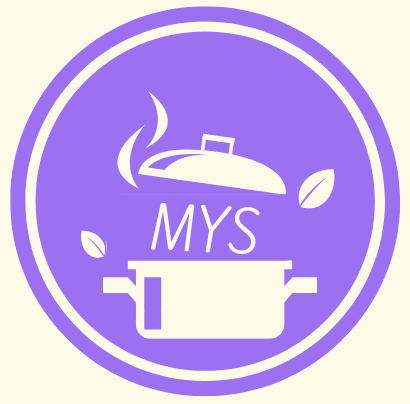Focusing on high protein foods can help you feel energized, satisfied and support your overall health.
1. The Importance of high protein Foods Goals
Motivation for a Fresh Start
Nutrition-focused goals are quite common at the beginning of a new year. The idea of a fresh start can be incredibly motivating.
Enhancing Health Through Eating Habits
You may be seeking ways to enhance your health, and paying attention to your eating habits is a great way to begin.
2. Balance Over Restriction
Embracing Nutrient Variety
Improving your eating habits doesn’t mean you have to eliminate certain foods or adhere to a restrictive diet. Instead, aim for balance and ensure you’re getting a variety of nutrients.
Benefits of High-Protein Foods
Stocking up on high-protein foods can help you feel fuller for longer, boost your energy levels, and support muscle health.
Read More: Vitamin E capsules for face: 4 Benefits and how to use it
3. Protein for Immune Support and Muscle Health
The Role of Protein in Winter Wellness
During cold and flu season, consuming enough protein is especially crucial for maintaining a strong immune system.
Why Protein Matters During Cold and Flu Season
High-protein diets not only improve energy levels but also enhance immune function during winter.
4. Cow’s Milk: A Nutritional Powerhouse
Comparing Protein Content in Milks
While plant-based milks are trendy, many don’t provide a significant amount of protein. For instance, plain unsweetened oat and almond milks contain only 1 and 2 grams of protein per cup, respectively. In contrast, cow’s milk offers 8 grams of protein per cup.
Versatile Ways to Incorporate Milk into Meals
You can enjoy a glass of milk with your meals, enhance your oatmeal by cooking it in milk instead of water, or treat yourself to some homemade pudding for dessert.
5. Canned Fish: A Protein and Omega-3 Rich Option
Cost-Effective and Nutrient-Dense Choices
Canned fish, such as tuna, salmon, and sardines, is an excellent source of protein and a cost-effective alternative to fresh fish. Canned tuna and salmon provide 20 grams of protein per 3-ounce serving, while canned sardines offer 24 grams.
How to Use Canned Tuna, Salmon, and Sardines
“Tuna is a convenient protein option that can easily be added to salads, sandwiches, lettuce wraps, and grain bowls,” says Patricia Kolesa MS, RDN.
6. Creative Recipes with Canned Fish
Pickled Tuna Salad for a Twist
If you’re looking for an alternative to your usual tuna salad, mix up a batch of briny pickled tuna salad.
Easy Salmon Cakes in 30 Minutes
Easy salmon cakes, made with ingredients you likely already have, can be on the table in just 30 minutes.
7. Quinoa: A Complete Plant Protein
Protein and Fiber Benefits of Quinoa
Quinoa is a complete plant protein, providing about 8 grams of protein per cooked cup. It’s also rich in fiber, which enhances satiety.
Meal Ideas: Breakfast Bowls to Stuffed Peppers
Kick off your day with a cinnamon-quinoa breakfast bowl, use quinoa for grain bowls, or substitute it for rice in quinoa-stuffed peppers.
8. Greek Yogurt: A Strained Protein Superstar
Why Choose Greek or Skyr Yogurt?
Greek yogurt is produced by straining out the whey, resulting in a thicker product that contains around 15 grams of protein per 6-ounce serving.
Delicious and Nutritious Breakfast Ideas
“For a high-fiber, protein-rich breakfast, try Greek yogurt topped with almonds and berries,” recommends Rachel Jensen MS, RDN.
9. Enhancing Recipes with Greek Yogurt
Protein-Packed Dips and Sauces
Greek yogurt can replace sour cream in dips, enhancing protein content, as seen in tahini-yogurt and avocado-yogurt dips.
Smoothies and Other Creative Uses
Blend Greek yogurt into a fruit smoothie for a nutritious start to your day.
10. Lentils: A Shelf-Stable Power Food
High Protein and Fiber Content of Lentils
One cup of cooked lentils contains 18 grams of protein, along with fiber that supports gut health and antioxidants that promote overall wellness.
Affordable and Versatile Meal Options
“Lentils are an economical and shelf-stable protein choice,” says Amy Lawson M.S., RD, LDN.
11. Easy Lentil Recipes for Every Meal
Breakfast Dal Bowl for Meal Prep
For those who prefer to prepare breakfast in advance, the savory breakfast dal bowl is a must-try.
Hearty Lentil & Vegetable Soup
The lentil & vegetable soup with parmesan makes for a satisfying one-pot meal.
12. Cottage Cheese: A High-Protein Snack and Ingredient
Cottage Cheese as a Ricotta Substitute
Cottage cheese can be substituted for ricotta in lasagna or layered into pasta bakes.
Creative Winter Recipes Using Cottage Cheese
Mix cottage cheese into a cheese sauce for a protein-packed mac and cheese.
13. Tips for Choosing Cottage Cheese
Low-Sodium Options for Healthier Choices
If you’re watching your sodium intake, consider low-salt or unsalted cottage cheese.
Toppings and Combinations for Snacks
Top cottage cheese with berries and nuts or cucumbers and roasted chickpeas for a delicious snack.
14. Wrapping Up: The Benefits of High-Protein Foods
Supporting Balanced Blood Sugar and Lean Muscle Mass
Adding more protein-rich foods supports blood sugar balance and lean muscle mass.
Enjoying Flavorful and Nutritious Meals
Stocking your pantry with high-protein essentials ensures both health and flavor.
15. Your Path to Better Nutrition in the New Year
Simple Steps to Improve Your Eating Habits
Start with small, manageable changes to improve your diet.
Stocking Your Pantry with High-Protein Essentials
With protein-rich staples like dairy, lentils, quinoa, and canned fish, you’re set for better nutrition.



